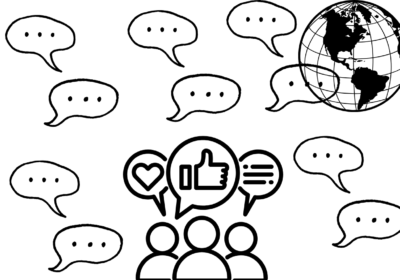The Power of Color Psychology in Branding

Color plays a critical role in branding and marketing. It uniquely evokes emotions, shapes perceptions, and influences consumer behavior. In today’s competitive business landscape, selecting the right color gives your brand the edge it needs to stand out and resonate with your target audience.
Why Color Matters in Branding
Colors aren’t just aesthetic elements; they carry deep psychological associations that trigger specific feelings or reactions. You can use color in branding to communicate messages nonverbally, establish brand identity, and create trust or urgency. Consumers make judgments about brands within seconds, largely influenced by color.
By strategically using color, you evoke certain emotions or associations that align with your brand’s values and mission. For example, Coca-Cola’s vibrant red excites and energizes, while Apple’s sleek use of white conveys simplicity and innovation.

The Psychology Behind Popular Brand Colors
Each color carries specific psychological effects. While these can vary slightly based on cultural differences, the general meanings remain consistent. Below are some common colors used in branding and the psychological responses they elicit:
1. Red: Energy, Urgency, and Passion
Red grabs attention and evokes strong emotions. Brands often choose red to convey energy, excitement, or passion. You’ll notice red on sale signs and clearance events because it creates a sense of urgency. Brands like Coca-Cola and Red Bull capitalize on red’s energizing effect.
2. Blue: Trust, Reliability, and Calmness
Blue instills calmness, security, and trust. Banks, technology companies, and healthcare providers frequently use blue to project reliability and professionalism. For instance, IBM, Facebook, and PayPal use blue to evoke a sense of trustworthiness and dependability.
3. Yellow: Optimism, Warmth, and Happiness
Yellow represents positivity and happiness. Brands often choose yellow to appear friendly and approachable. For example, McDonald’s and Snapchat use yellow to evoke joy and energy.
4. Green: Health, Nature, and Growth
Green signifies health, nature, and environmental consciousness. Brands in the wellness and eco-friendly industries, such as Whole Foods and John Deere, use green to symbolize balance and sustainability, aligning with natural growth.
5. Purple: Luxury, Creativity, and Wisdom
Purple represents royalty, luxury, and creativity. Brands like Cadbury and Hallmark use purple to project a sense of premium quality and imagination. Purple suits brands that wish to appear high-end or uniquely creative.
6. Black: Power, Elegance, and Sophistication
Black conveys power, sophistication, and exclusivity. Fashion and luxury brands such as Chanel and Nike use black to create a sense of authority and timeless elegance.
7. Orange: Energy, Enthusiasm, and Playfulness
Orange evokes enthusiasm, creativity, and friendliness. It appeals to younger audiences and conveys a sense of fun. Brands like Fanta and Nickelodeon use orange to reflect this vibrant energy.
8. White: Simplicity, Cleanliness, and Freshness
White stands for purity and clarity. Apple and Tesla use white to emphasize minimalism and innovation, creating a sleek, modern look.
9. Pink: Femininity, Compassion, and Playfulness
Pink symbolizes femininity, nurturing, and compassion. Brands like Barbie and Victoria’s Secret use pink to project playfulness and beauty.
How to Choose the Right Colors for Your Brand
Choosing the right color involves more than picking a hue you like. You must ensure that your choices align with your brand’s message, values, and the emotions you want to evoke in your audience.
1. Understand Your Brand’s Personality
Identify whether your brand is bold, calm, energetic, or trustworthy. Choose colors that represent these characteristics. A high-energy fitness brand might opt for red or orange, while a healthcare brand may prefer blue or green.
2. Know Your Audience
Different demographics respond to colors in various ways. Younger audiences gravitate toward bright, playful colors, while older or more conservative audiences prefer classic, subdued hues.
3. Consider Cultural Associations
Colors hold different meanings across cultures. Be mindful of these differences, especially if your brand operates in multiple regions.
4. Use Contrast to Stand Out
Although one color may dominate your brand’s look, use secondary colors to complement and contrast your primary choice. This technique helps guide attention to important elements like CTAs (Call-to-Action buttons).
Wrapping Up: Harness the Power of Color in Branding
Color psychology plays a vital role in how customers perceive and engage with your brand. By understanding the psychological effects of different colors and selecting those that align with your brand’s identity, you build a deeper emotional connection with your audience and stand out from competitors.
Transform Your Brand with the Power of Color – Contact Media Vaccine Today!
Email: mediavaccine@aol.com
Phone: +1 (204) 647-5998
We are also available on Instagram, Facebook, & Linkedin
See more related post: Custom Printing Services in Canada ,Mastering the Art of Branding



